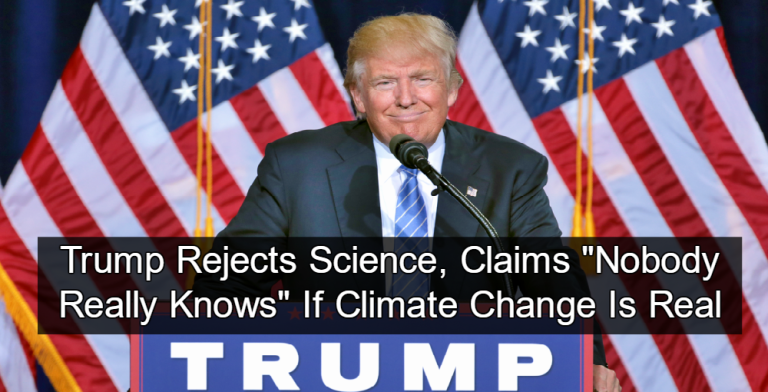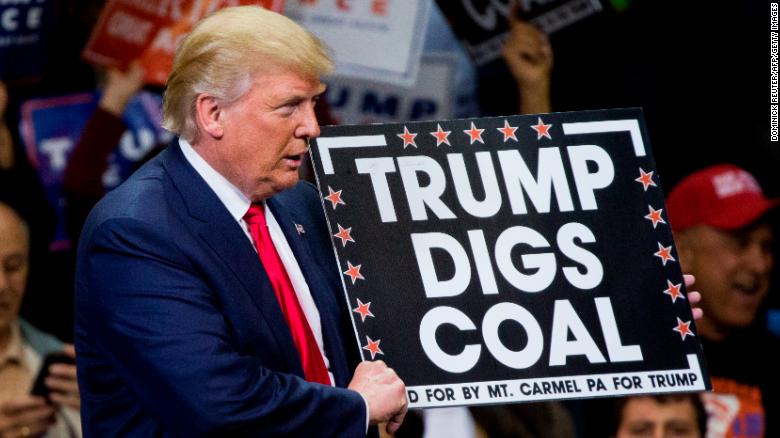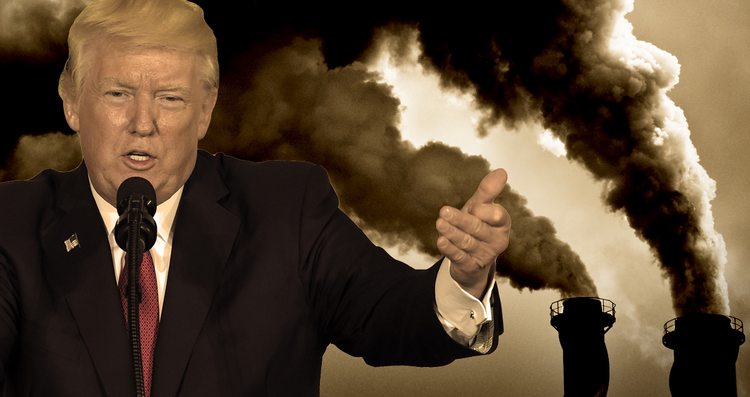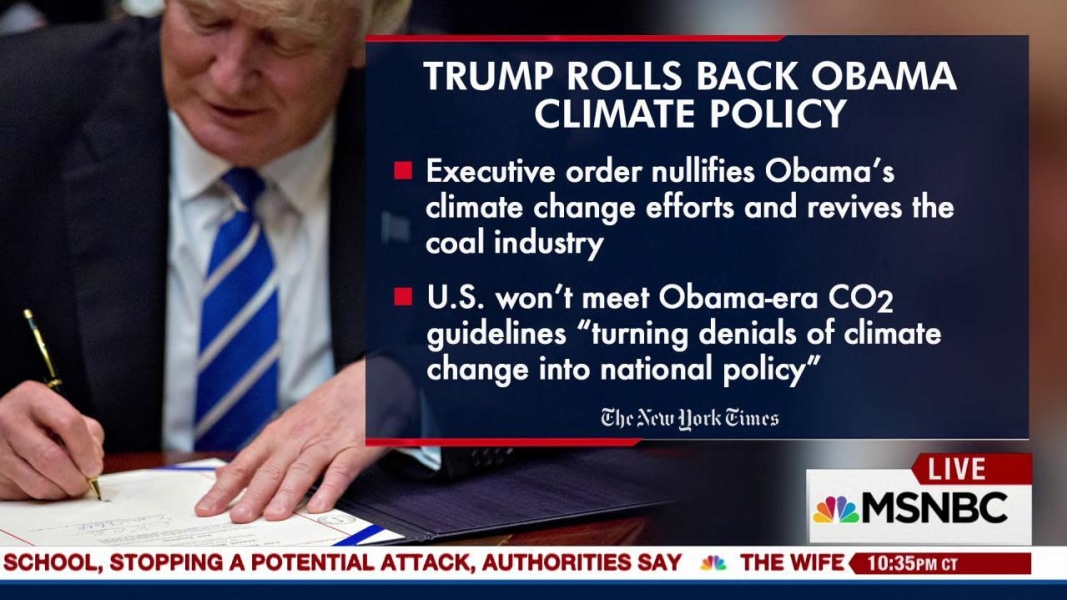
How Terrible Can One Administration Be? Let Us Count the Ways.
Lena Moffitt / The Progressive
(October 13, 2020) — It’s hard to convey the scope of the Trump Administration’s attacks on the environmental protections that keep our air and water clean, stabilize our climate, and improve public health. There is just so much.
A list compiled by National Geographic ran to more than 21,000 words, more than ten times the length of this article — and that was only through May 2019. A group of former Environmental Protection Agency staffers came up with another list of what would have to be done to reset the EPA after the Trump Administration. It ran to nearly two hundred pages.
The administration has abandoned the Paris Agreement, the landmark international treaty to limit climate catastrophe to manageable levels. It slashed the size of national monuments like Bears Ears in Utah, handed over our public lands to fossil-fuel interests, and built a wall across fragile desert ecosystems. It rolled back the fuel-economy standards for cars that comprised the nation’s most influential and ambitious policy to tackle climate change. It has refused to ban pesticides that harm children’s brains, and loosened regulations on toxins that increase our risk of cancer, asthma, and even premature death.
While the rollbacks are numerous, the Trump Administration’s playbook is simple: Give polluting industries what they want. Ignore what people need and take steps to cut them out of the process. Normalize corruption and attacks on the institutions meant to counterbalance the administration’s power. And never take any action that reflects the reality of climate change.
The Trump Administration has often played Santa Claus for extractive industries, checking off nearly every item on their wish lists, regardless of the costs to public health and the environment.
Consider the wish list submitted by coal baron Robert Murray, a Trump donor who asked the administration to withdraw from the Paris Agreement, end the Obama Administration’s Clean Power Plan, and cut the EPA’s staff by at least half. Within its first year, the Trump Administration made progress on nearly all of these items, prompting an article that ran in The New York Times under the headline, “How a Coal Baron’s Wish List Became President Trump’s To-Do List.”
The EPA’s own analysis estimated that the repeal of the Clean Power Plan alone could cause up to 1,400 premature deaths every year by 2030.
Trump’s Interior Department took a similarly generous view toward the fifty-three rollbacks requested or supported by corporations and industry groups like the American Petroleum Institute. The Center for Western Priorities found that, by 2019, Trump’s Interior Department had made thirty-six of those wishes come true, and were plugging away at the rest.
Among these rollbacks were the largest-ever removal of federal protections for public lands: On a single day, the Trump Administration cut nearly two million acres of land from the Bears Ears and Grand Staircase-Escalante National Monuments. These acres encompassed sites sacred to Native peoples, as well as the locations of ancient artifacts, rock paintings, and cliff dwellings.
But that was far from all: Following industry lobbying, the Interior Department lifted a moratorium on new coal mining on public lands, worked to expand offshore drilling, and slashed protections for threatened and endangered species. These rollbacks are harming landscapes and animal populations in ways that will take generations to recover from, if they are able to recover at all.

Even as COVID-19 caused unemployment to skyrocket, the Trump Administration still prioritized ticking off the boxes on the oil and gas industry’s wishlist over worker protections.
According to Energy Secretary Dan Brouillette, the Trump Administration worked closely with the Federal Reserve to ensure that oil and gas companies got what they wanted from its Main Street Lending Program. That included giving up to $200 million in taxpayer-backed loans to bail out oil and gas companies for poor business decisions that they made before the pandemic.
While industries’ requests have found a warm reception, the Trump Administration has been decidedly less friendly to public input. It routinely ignores the hundreds or even thousands of public comments lodged in opposition to environmental rollbacks. Now, through its attacks on the National Environmental Policy Act (NEPA), the administration is trying to make sure that the public has even less chance to be heard.
Known as “the people’s environmental law,” NEPA requires federal agencies to identify the environmental, economic, and health impacts of major projects like highways and pipelines, gather input from the people who will have to live near them, and weigh alternatives. It’s a crucial (and sometimes the only) way for communities to express concerns about a project. And it’s especially important for communities of color and low-income communities, where developers often seek to build dirty projects.
But in July — and once again, at industry groups’ behest — the Trump Administration rolled back NEPA. Now government agencies are prevented from considering the cumulative and indirect impacts that a project might have, including its contributions to the climate crisis and a community’s overall pollution burden. This allows agencies to disregard, say, the mom who argues that her community already has enough sources of air pollution, as evidenced by her kid’s asthma attacks, or a young person who opposes new fossil-fuel infrastructure due to concern about climate catastrophe.
Under the Trump Administration’s reinterpretation of the people’s environmental law, the people are being silenced. And so are the voices of scientists who point out the costs of rollbacks to public health and the environment.
According to a report from the nonpartisan National Task Force on Rule of Law & Democracy, the United States has entered a “crisis point” for science. Key scientific posts are being left unfilled, and industry representatives are taking roles that scientists used to fill.
Politically inconvenient research has been suppressed, defunded, and discredited. At the Department of the Interior, officials slipped claims into at least nine reports that human-caused carbon levels are helping plant growth — a disingenuous attempt to downplay the catastrophic effects of climate change.

Perhaps the most egregious way that Trump has undermined environmental protection is through his appointment of conflicted and even corrupt officials to key agencies.
Former Interior Secretary Ryan Zinke, for example, faced a whopping eighteen federal investigations during his two-year tenure, some alleging favorable treatment of companies with whom he had personal connections. After Hurricane Maria in 2017, the former Congressman’s department awarded a noncompetitive, $300 million contract to a tiny company from his hometown of Whitefish, Montana, to help repair Puerto Rico’s electric grid. Zinke knew Whitefish Energy’s chief executive officer and his son had been employed by the company, whose primary investors were major Trump donors.
Meanwhile, the temporary appointment of former oil and gas lobbyist William Pendley as acting director of the Bureau of Land Management has been repeatedly extended to spare him a Senate confirmation hearing, where he might be asked about his 2016 op-ed calling for the federal government to sell off its public lands.
Pendley helped move the Bureau of Land Management from Washington, D.C., to Grand Junction, Colorado — a move that former Acting Chief of Staff Mick Mulvaney admitted was a way to get rid of pesky public servants without openly firing them. And it worked. Pendley managed to dump 70 percent of his agency’s Washington staff, turning it into a “ghost ship,” according to one staffer. It now shares a building with a Chevron office, the Colorado Oil and Gas Association, and a natural gas exploration business.
The EPA is run by Andrew Wheeler, a former coal lobbyist who has repeatedly approved policies that help his former clients — at great cost to public health. Under his tenure, EPA staffing has dropped to its lowest point in a decade. Those who remain are demoralized and struggle to enforce the environmental protections still on the books.
In January 2019, the EPA’s criminal prosecutions hit a thirty-year low, leaving communities, especially communities of color, with limited recourse when bad actors release toxins into their air and water.

The Trump Administration has spent nearly four years working to strip scientists, the public, and environmental organizations of the power to meaningfully counteract its agenda of opening up our public lands and natural resources for private exploitation. Defenders of the environment now have fewer avenues to resist the administration’s agenda than they did in 2016.
That’s especially problematic when it comes to the Trump Administration’s climate agenda, which can be summarized as “Burn, baby, burn.” This country is already in a climate emergency, as shown by recent devastating, unprecedented wildfires, wind storms, and hurricanes. The Trump Administration has steadfastly dismissed the warnings of activists and scientists who understand that we have only a short window to drastically reduce emissions and avert catastrophic climate change.
Instead, the administration has rolled back rules governing emissions of methane, one of the most potent greenhouse gases; loosened the rules on how much carbon that cars and power plants may emit; and made it harder for future administrations to address the climate crisis. It’s also declared open season on drilling for more oil even on lands sacred to Indigenous peoples, like the Arctic National Wildlife Refuge.
In 2017, Trump signed an executive order that eliminated the federal government’s obligation to build infrastructure that will withstand the effects of a changing climate, like sea-level rise. This forces communities to depend on infrastructure that might become unusable, or even dangerous, over the next few decades.
Trump’s Interior Department has also eliminated the requirement to consider climate change in land, wildlife, and water management, to remove what Secretary David Bernhardt called “potential burdens” to energy development. The department refuses to even mention climate change in key governing documents, like its current strategic plan.

The Trump Administration’s playbook has been relentless and consistent. Place our government and natural resources at the disposal of extractive industries. Silence scientists, community members, and federal employees who seek to make the government serve the public good with constant fear-mongering about the dangers to the nation’s economy posed by “radical environmentalists.” Appoint agency bosses who are openly hostile to the cause of environmental protection. Deny the reality of climate change. And watch as, day by day, the world gets hotter, drier, and less hospitable to life.
Fortunately, the Trump Administration has been countered by a strong, resurgent environmental movement. Indigenous peoples and their allies have managed to throw obstacles in the path of new oil and gas pipeline projects, including the Atlantic Coast Pipeline and the Constitution Pipeline. Activists have created a business environment in which making investments in major gas infrastructure is now a huge risk to reputations and bottom lines.
And those who have borne the pollution burden of the fossil-fuel industry for far too long are rising up to demand that local leaders address the interconnected crises of climate change, racial injustice, and economic injustice.
We’ve seen Black activists work to make defunding the police the new common sense. Less well-known is that the Movement for Black Lives ascendant platform includes a demand to invest in clean energy, local food systems, and other building blocks of a safe environment.
Despite the Trump Administration’s best efforts, the environmental movement is stronger than ever, more intersectional than ever, and more capable of mobilizing millions in the streets and making our presence felt. That offers at least a modicum of hope to those who seek a world that is greener, healthier, and more hospitable to life.
Lena Moffitt is director of the Sierra Club’s Our Wild America campaign.
Posted in accordance with Title 17, Section 107, US Code, for noncommercial, educational purposes.